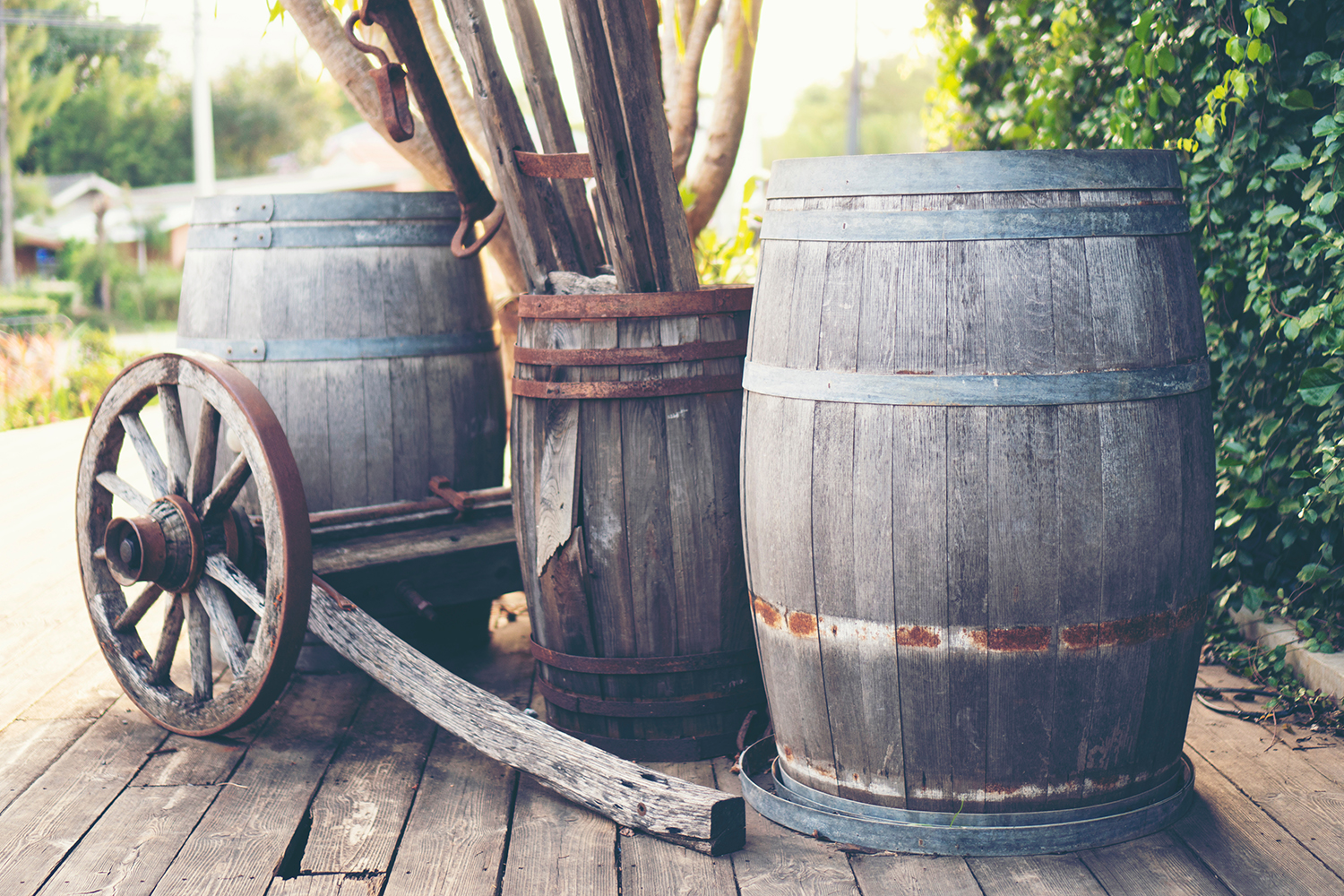Oak barrels stacked in their rustic lofts at local vineyards are definitely lovely to look at. However, the main reason that good wine spends so much of its life maturing in barrels isn’t purely aesthetic. In truth, using wooden oak barrels to influence and improve the flavor of wine has a long history and a solid scientific foundation. Since the first century, it has been a renowned and challenging art form that has inspired vintners worldwide.
We’ll talk about how utilizing oak wine barrels affect the flavor of wine in this blog article! So, without further ado, let’s get started!
What are the Benefits of Aging Wines in Used Oak Barrels?
Many wines were kept and served in wood barrels before introducing glass bottles (the 1600s and earlier). As a result, wine barrels are frequently seen in artwork from this historical period. And, even though we’ve outgrown the need for barrels to store and transport wine, we’ve developed a liking for them. Modern winemaking relies heavily on the use of oak barrels.
What Role Do Oak Barrels Play in Winemaking?
There are three significant contributions that oak makes to wine:
- Aromas of vanilla, clove, smoke, and coconut are among the flavor components.
- It allows for delayed oxygen availability, making the wine taste smoother and less astringent.
- It creates an ideal environment for specific metabolic reactions (especially Malolactic Fermentation), resulting in creamier wines.
What Flavors Does Wine Gain From Being Aged in Oak Barrels?
Wine, unlike beer, does not allow for flavorings. As a result, wood might be regarded the recognized method of altering the flavor of the wine. When a wine is aged in wooden oak barrels, the oak tastes blend with the wine’s own to provide a wide range of new subtleties. Oak flavor components come in various flavors, from dried fruits to burnt sugar to coconut and vanilla aromas.
Furthermore, the used oak barrels impart tannins to the wine, imparting bitterness and astringency. Therefore, wines that have been aged in barrels for a longer length of time have a significantly higher concentration than fresh wines.
What Effect Does Oak Have on White Wine?
The American oak adds rounded vanilla and coconut flavors, while the French oak adds hazelnut and smokiness.
American wood may provide popcorn and toffee flavors to white wines, notably Chardonnay, while French wood imparts a mild nuttiness and a hint of smoke. However, because of the strong bond between oak and Chardonnay, wood tastes are sometimes mistaken for the grape.
Because of structural variations in the wood grain, American oak may be cut into staves for barrel making, but French oak must be split. Both, however, must be air-dried and seasoned before use and roasted over an open flame to bend into form.
Toasting has an impact as well: in American oak, greater toast levels accentuate butterscotch flavors, whereas, in French oak, higher toast levels increase smokiness. Winemakers can also choose whether or not to ferment and age their wines in oak barrels. Compared to fermentation in steel tanks, maturation in barrels, maturation in used barrels promotes higher oak flavor integration.
What Effect Does Oak Have on Red Wine?
Used wine barrels have a significant impact on red wines as well. American oak contributes luscious flavors of coconut and cinnamon, while French oak contributes spicy undertones of clove and cedar. The higher the toast level, the more it resembles mocha or espresso.
The importance of oxygen in red winemaking is considerably greater. This is because the color and tannin in grape skins require air to create stable phenolic compounds, while the tannins in wood help sustain the wine’s structure.
The popularity of oak barrels can be attributed to five factors:
- Oak is antibacterial by nature. Therefore, sulfur dioxide is used less in wine produced or aged in oak barrels.
- Barrels aid in the clarification and stabilization of the wine. This eliminates the need for additives to produce a clear and stable wine, resulting in a more natural product.
- It enhances the ageability, texture, and color stability of red wines by smooth tannins.
- Oak barrels, particularly young oak barrels, give additional flavors to the wine, making it more complex and delicious. The degree of toasting and the type of wood you use influence the taste.
- After three years of usage, old used wine barrels and casks impart no discernible flavors to the wine.
When it comes to oaked wine, it’s all about personal preference and sampling various types, and pricing ranges until you discover something you enjoy. Finally, it comes down to personal choice; if even the most fabulous oaked specimens don’t do the trick for you, go clear.
Personally, I am a firm believer in the use of oak barrels. I hope you found this wine blog helpful in learning more about how oak barrels impact the flavor of a wine. Don’t forget to leave your views in the comment area below if you like this article!
Author Bio:
Rachel Moore works as a Marketing Manager at Rocky Mountain Barrel Company. Rocky Mountain Barrel Company provides used wooden barrels for spirits, like bourbon barrels, whiskey barrels, rum barrels, and wine barrels. Rachel Moore loves her combination of nature, wine, and nerdy friends who appreciate her homemade wines.
Social Profiles:
https://www.facebook.com/rockymbc
https://twitter.com/barrelagethat
https://www.instagram.com/rockymountainbarrelco




Informative